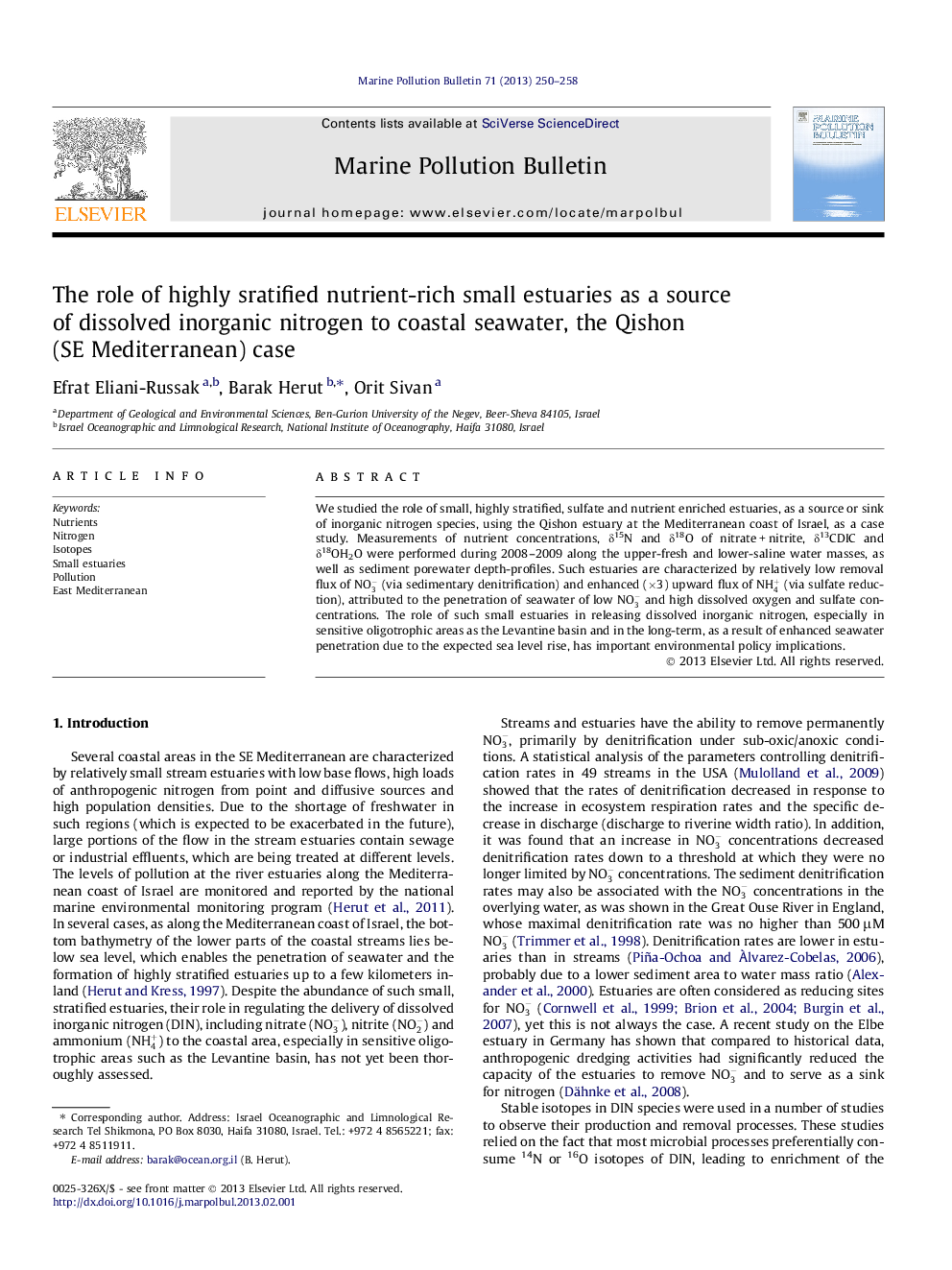| Article ID | Journal | Published Year | Pages | File Type |
|---|---|---|---|---|
| 6359019 | Marine Pollution Bulletin | 2013 | 9 Pages |
We studied the role of small, highly stratified, sulfate and nutrient enriched estuaries, as a source or sink of inorganic nitrogen species, using the Qishon estuary at the Mediterranean coast of Israel, as a case study. Measurements of nutrient concentrations, δ15N and δ18O of nitrate + nitrite, δ13CDIC and δ18OH2O were performed during 2008-2009 along the upper-fresh and lower-saline water masses, as well as sediment porewater depth-profiles. Such estuaries are characterized by relatively low removal flux of NO3- (via sedimentary denitrification) and enhanced (Ã3) upward flux of NH4+ (via sulfate reduction), attributed to the penetration of seawater of low NO3- and high dissolved oxygen and sulfate concentrations. The role of such small estuaries in releasing dissolved inorganic nitrogen, especially in sensitive oligotrophic areas as the Levantine basin and in the long-term, as a result of enhanced seawater penetration due to the expected sea level rise, has important environmental policy implications.
⺠Small, highly stratified, SO42- and nutrient enriched estuaries, releases nitrogen. ⺠Upward NH4+ flux is higher by a factor of 3 than the removal NO3- flux. ⺠Penetration of seawater of low NO3- and high DO inhibit denitrification rates. ⺠Supply of seawater with high SO42- levels enhances sedimentary SO42- reduction rates. ⺠Sea level rise will enhance nitrogen release in such small estuaries.
